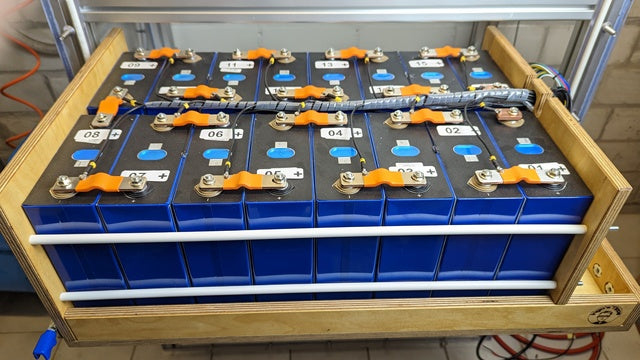
CHARGING LITHIUM IRON PHOSPHATE BATTERIES (LIFEPO4)
Share
How to charge a LiFePO4 batteries? That is one of the most common questions we get from our customers. The answer is simple: use a LiFePO4 battery charger, of course. When charging LiFePO4 batteries, make sure that you are not using a charger meant for other lithium ion chemistries, which are typically designed with a higher voltage than what is required by LiFePO4. We are often asked if a lead-acid battery charger can be used to charge lithium iron phosphate. The short answer is yes, as long as the voltage settings are within the acceptable parameters of LiFePO4 batteries.
CHARGER INSPECTION
Before using a LiFePO4 charger, check that your charger’s cables are insulated and free of breakage. Charger terminal connectors should be clean and properly mate with the battery terminals to ensure a good connection and optimum conductivity. Please refer to us or your specific battery’s datasheet, for appropriate torque settings.
CHARGING GUIDELINES
If LiFePO4 batteries are not fully discharged, they do not need to be charged after each use. LiFePO4 batteries do not get damaged when left in a partial state of charge (PSOC). You can charge your LiFePO4 batteries after each use or when they have been discharged up to 80% DOD (20% SOC). If the Battery Management System BMS) disconnects the battery due to low voltage (voltage will be <10V), remove the load and charge immediately using a LiFePO4 battery charger.
CHARGING TEMPERATURE
LiFePO4 batteries can be safely charged between 0°C to 45°C (32°F to 113°F). LiFePO4 batteries do not require temperature compensation for voltage when charging at hot or cold temperatures. All Canbat LiFePO4 batteries come with an internal BMS that protects the battery from low and high temperatures. If the BMS disconnects due to low temperature, the battery must warm up for the BMS to reconnect and accept the charging current. If the BMS disconnects because of high temperature, the battery will need to cool down before the BMS will accept charging the battery. Please refer to your specific battery’s datasheet for the BMS low temperature and high-temperature cut-off and reconnect values.
HOW TO CHARGE LIFEPO4 BATTERIES WITH A LEAD-ACID CHARGER
Most lead-acid battery chargers can be used with LiFePO4 batteries as long as they are within the appropriate voltage guidelines. AGM and Gel algorithms typically fall within the LiFePO4 voltage requirements. The voltage for flooded battery charging algorithms is often higher than LiFePO4 charging requirements, which will result in the BMS disconnecting. If this happens, it is generally good practice to replace your charger for one with a LiFePO4 charge profile. Since the BMS protects the battery, using lead-acid chargers will typically not damage the battery.
Note that if the BMS disconnects due to low voltage, a lead-acid battery charger may not be able to reconnect the BMS, even if the charger has the acceptable charging parameters to charge LiFePO4. This is because when the BMS disconnects, the lithium battery will not have a voltage as it will read 0V on a voltmeter, while lead-acid chargers require the battery to read out a voltage to start charging. If the battery is reading 0V, the lead-acid battery charger will not be able to understand that a battery is connected and that it should start charging. This is also true for some low-quality lithium chargers. It is always recommended that you invest in a high-quality LiFePO4 charger to ensure high performance and longevity. Feel free to contact us should you have any questions.
CHARGING LIFEPO4 IN PARALLEL
When connecting LiFePO4 batteries in parallel, please make sure each battery is within 0.1V of each other before putting them in service, This will minimize the chance of imbalance between batteries. If you’re charging 12V LiFePO4 batteries, the charging voltage should be between 14V – 14.2V. When charging 24V batteries in parallel, the charging voltage should be 28V – 28.4V. Charging 36V lithium batteries in parallel requires a voltage of 42V – 42.6V. Finally, charging 48V LiFePO4 batteries require voltage parameters of 56V – 56.8V. Below is a table with a summary showing the voltage requirements for each system voltage.
| System Voltage | Charging parameters |
| 12V | 14V – 14.2V |
| 24V | 28V – 28.4V |
| 36V | 42V – 42.6V |
| 48V | 56V – 56.8V |
The voltage parameters apply to both charging profiles CC and CC-CV. If your charger’s voltage is lower than those listed in the table, it will not damage your battery, but it will be undercharged, and it will not provide the full rated capacity of the battery. If your charger’s voltages are higher than those listed in the tables above, the BMS may disconnect the battery and you may have to remove the load to reconnect. We recommend you replace the charger to avoid this inconvenience and to invest in a high-quality LiFePO4 battery charger.
CHARGING LIFEPO4 BATTERIES IN SERIES
Below are the key, typical charger inputs when using an inverter/charger or charge controller for charging LiFePO4 batteries. Many inverter/ chargers require additional parameters, please contact Canbat technical support for assistance. LiFePO4 batteries do not require equalizing. LiFePO4 batteries do not require temperature compensation for voltage when charging at hot or cold temperatures.
| PARAMETER | 12V SYSTEM | 24V SYSTEM | 36V SYSTEM | 48V SYSTEM |
| Bulk Voltage | 14V – 14.6V | 28V – 29.2V | 42V – 43.8V | 56V – 58.4V |
| Absorption Voltage | 14V – 14.6V | 28V – 29.2V | 42V – 43.8V | 56V – 58.4V |
| Absorption Time | 0- 6 min | 0- 6 min | 0- 6 min | 0- 6 min |
| Float Voltage | 13.8V ± 0.2V | 27.6V ± 0.2V | 41.4V ± 0.2V | 55.2V ± 0.2V |
| Low Voltage Cutoff | 11V | 22V | 33V | 44V |
| High Voltage Cutoff | 14.6 | 29.2V | 43.8V | 58.4V |
CHARGING LIFEPO4 WITH ALTERNATOR AND DC TO DC CHARGERS
Depending on the quality of the alternator, it may work fine to charge LiFePO4 batteries without modifications. However, low-quality alternators with poor voltage regulation can cause the BMS to disconnect LiFePO4 batteries. If the BMS disconnects the batteries the alternator may be damaged. To protect your LiFePO4 battery and alternator, please be sure to use a compatible high-quality alternator or install a voltage regulator. You can also use a DC to DC charger to safely and effectively charge your batteries including house banks. Installing a DC to DC charger is the recommended option when it comes to charging lithium with an alternator.
FUEL GAUGES FOR LITHIUM BATTERIES
If you are using a voltage-based fuel gauge that is designed for lead-acid batteries, it will not accurately measure the state of charge (SOC) of LiFePO4 batteries. Please replace your fuel gauge with one that measures current rather than voltage to accurately measure the state of charge of lithium iron phosphate batteries.
If you have any technical questions, please contact EEL Battery Technical Support at +86 13174625515(WhatsApp)
